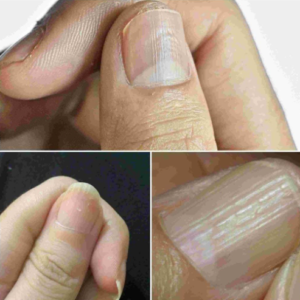Understanding Why You Have Lines on Your Nails
Noticing lines on your nails can be concerning, but they’re often harmless and can indicate a variety of factors, from minor issues to underlying health conditions. Here’s a breakdown of what those lines might mean:
- Vertical Lines (Longitudinal Ridges)
These are the most common and usually harmless. Vertical lines run from the cuticle to the tip of the nail and often become more noticeable with age due to slower cell turnover. Dehydration or minor nutrient deficiencies, like a lack of magnesium or vitamin B12, can also contribute. - Horizontal Lines (Beau’s Lines)
Horizontal lines or grooves across the nail can be a sign of interrupted nail growth, often caused by physical trauma, high fever, severe illness, or stress. Conditions like diabetes, zinc deficiency, or even chemotherapy can trigger these lines. If you notice deep or multiple Beau’s lines, it’s best to consult a healthcare provider. - White Lines (Muehrcke’s Lines)
These paired, white horizontal lines can indicate low protein levels in the blood, often linked to liver or kidney disease. Unlike Beau’s lines, they don’t move as your nail grows. - Dark Lines (Melanonychia)
Brown or black vertical lines should be taken seriously, especially if they appear suddenly or change over time. They can be harmless in people with darker skin tones, but they might also indicate melanoma, a type of skin cancer, if accompanied by other symptoms like nail discoloration or changes in the surrounding skin. - Nail Pitting or Dents
Small depressions in the nail surface can be linked to conditions like psoriasis, eczema, or alopecia areata.
While some nail lines are a natural part of aging, sudden changes or additional symptoms like discoloration, thickening, or pain warrant medical attention to rule out serious health issues.

